Carlos Duarte: “We are facing the first clear evidence of a dangerous climate change”
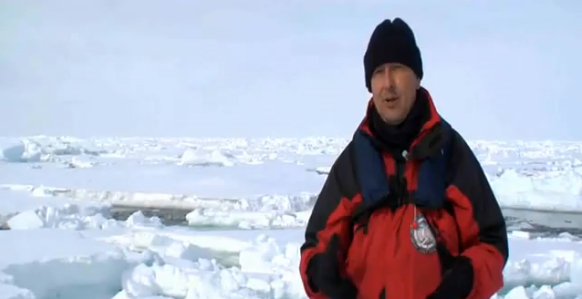
“We are facing the first clear evidence of a dangerous climate change. However, some of the researchers and some of the Media are plunged into a semantic debate about whether the Arctic Sea-Ice has reached a tipping point or not. This all is distracting the attention on the need to develop indicators that warn about the proximity of abrupt changes in the future, as well as on the policymaking to prevent them”, prof. Carlos Duarte, Director of the Oceans Institute at The University of Western Australia and Research Professor with the Spanish National Research Council (CSIC) at the Mediterranean Institute for Advanced Studies (IMEDEA) in Mallorca, Spain.
Tipping points are defined as critical points within a system, of which future condition may be qualitatively affected by small perturbations. On the other hand, tipping elements are defined as those components of the Earth system that may show tipping signs.
According to the experts, the Arctic shows the largest concentration of potential tipping elements in Earth’s Climate System: Arctic Sea-Ice; Greenland Ice-Sheet; North Atlantic deep water formation regions; boreal forests; plankton communities; permafrost; and marine methane hydrates among others.
Duarte maintains: “Due to all of this, the Arctic region is particularly prone to show abrupt changes and transfer them to the Global Earth System. It is necessary to find rapid alarm signs, which warn us about the proximity of tipping points, for the development and deployment of adaptive strategies. This all would help to adopt more preventive policies”.
In an article, published in the latest number of ‘AMBIO’, Duarte and other CSIC researchers detail the tipping elements present in the Arctic. They also provide evidence to prove that many of these tipping elements have already entered into a dynamic of change that may become abrupt in most of the cases. According to the study, it is possible to observe numerous tipping elements that would impact on the Global Climate System if they were perturbed.
CSIC scientist explains: “In this work, we provide evidence showing that many of these tipping elements have already started up. We also identify which are the climate change thresholds that may accelerate the global climate change. The very human reaction to climate change in the Arctic (dominated by the increase of activities such as transportation, shipping, and resource exploitation) may contribute to accelerate the changes already happening”. CSIC website
Arctic – 2011 in review
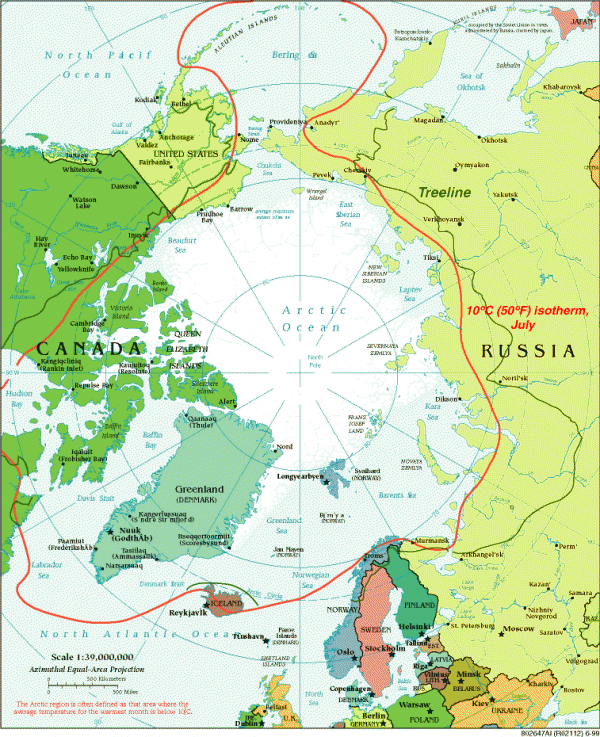
According to US National Snow and Ice Data Center, Arctic sea ice extent for December 2011 was the third lowest in the satellite record. The five lowest December extents in the satellite record have occurred in the past six years. Including the year 2011, the linear rate of decline ice December ice extent over the satellite record is -3.5% per decade. The Arctic gained 2.37 million square kilometers (915,000 square miles) of ice during the month. The average ice gain for December was 1.86 million square kilometers (718,000 square miles). On December 31, Arctic sea ice extent was 13.25 million square kilometers (5.12 million square miles), 561,000 square kilometers (217,000 square miles) more than the ice extent on December 31, 2010, the lowest extent on December 31 in the satellite record.
Arctic sea ice extent remained unusually low through December, especially in the Barents and Kara seas. In sharp contrast to the past two winters, the winter of 2011 has so far seen a generally positive phase of the Arctic Oscillation, a weather pattern that helps to explain low snow cover extent and warmer than average conditions over much of the United States and Eastern Europe. In Antarctica, where summer is beginning, sea ice extent is presently above average.
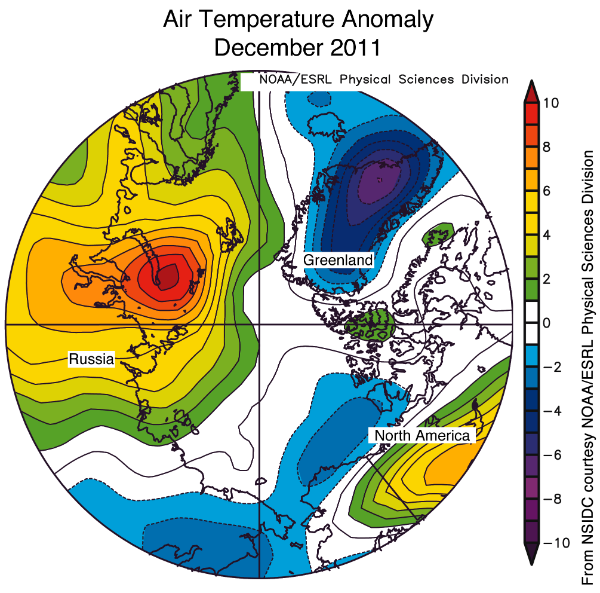
Arctic sea ice extent fell to its seasonal minimum on September 9, 2011, falling just short of the record low set in September 2007, when summer weather conditions were extremely favorable for ice loss. This summer, the weather was not as extreme as 2007, so it was surprising that ice extent dropped so low. The low ice extent, along with data on ice age, suggests that the Arctic ice cover remains thin and vulnerable to summer melt. Northern Hemisphere snow cover retreated very rapidly last spring, with record and near-record low snow cover extents in May and June despite higher-than-average winter snow extent as of February and March.
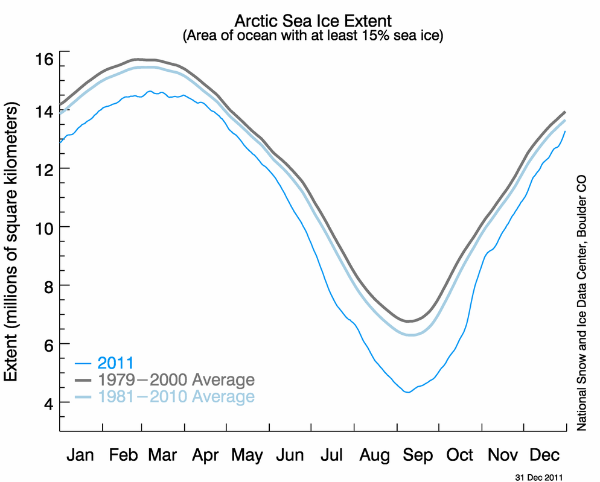
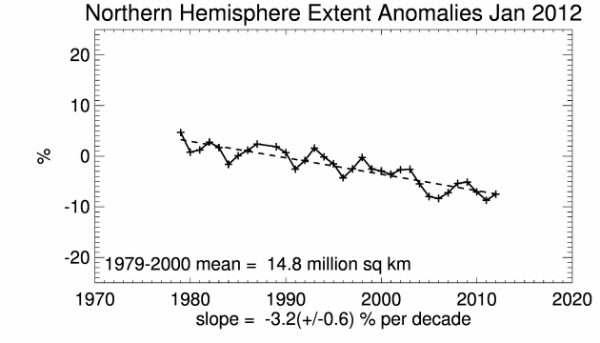

Additional materials for those who are more interested into subject:
View NSIDC Data on Virtual Globes: Google Earth
Excange for Local Observations and Knowledge of the Arctic (ELOKA)
Multisensor Analyzed Sea Ice Extent – Northern Hemisphere (MASIE-NH)
International Bathymetric Chart of the Arctic Ocean (IBCAO)
Seasonal Ice Zone Observing Network (SIZONET)
SEDNA: Sea ice Experiment – Dynamic Nature of the Arctic
Conservation of Arctic Flora and Fauna (CAFF)

Commenting rules and guidelines
We value the thoughts and opinions of our readers and welcome healthy discussions on our website. In order to maintain a respectful and positive community, we ask that all commenters follow these rules.